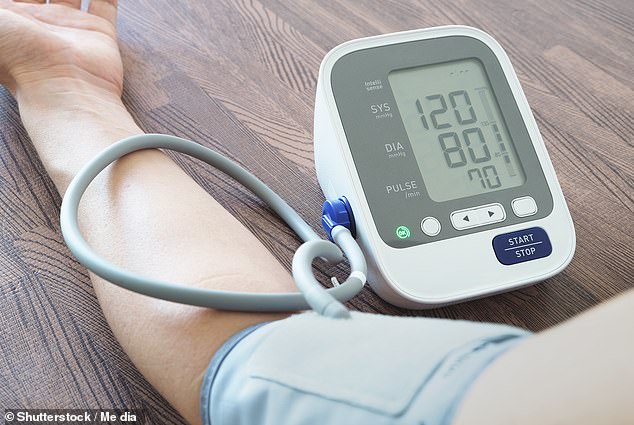If you have been diagnosed with high blood pressure, it might be worth seeing your doctor to have it checked again.
Incorrect arm position has been linked to much higher readings than if taken the way recommended by the NHS: sitting in an upright chair, propped up on a table or desk.
The researchers found that other positions, such as resting the arm in the lap or to the side, can substantially overestimate blood pressure readings.
Experts suggest it can make a “big difference” and lead to misdiagnoses, highlighting the need for a universal approach to readings.
Incorrect arm position has been linked to much higher readings than if taken the way recommended by the NHS: sitting in an upright chair, propped up on a table or desk.
Researchers at Johns Hopkins Medicine in the US recruited 133 adults, ages 18 to 80, who had their blood pressure taken during a single visit.
Before taking the readings, all participants in the study emptied their bladders, walked for two minutes to mimic someone arriving at the clinic, and then sat and rested for five minutes with their backs and feet supported.
Each person wore an upper arm blood pressure cuff that fit around their arm and had a series of measurements taken with a digital blood pressure device 30 seconds apart.
They took readings when the arms were resting on a desk, on a lap, and when the arms were unsupported and hanging at the patient’s sides.
Placing one arm in the lap was found to overestimate systolic pressure (the top number that represents the pressure when the heart pushes blood out) by 3.9 mmHg.
It also increased diastolic blood pressure (the lower number that measures pressure while the heart is resting) by 4 mmHg.
Meanwhile, an unsupported arm hanging at the side overestimated systolic pressure by 6.5 mmHg and diastolic pressure by 4.4 mmHg.
The findings, published in the journal JAMA Internal Medicine, suggest that people could end up having high blood pressure readings simply based on the position of their arm, with an arm hanging at their side giving the highest readings.
The NHS advises that normal blood pressure is between 90/60 mmHg and 120/80 mmHg.
A value of 135/85 or higher is considered high blood pressure if the reading was taken at home.
If the reading was taken in a pharmacy, GP office or clinic, the figure is 140/90 mmHg or higher.
The authors recommend that people rest for five minutes before taking an initial reading and then take a second one after several minutes to check for accuracy.
Lead researcher Dr Tammy Brady said different arm positions were often used in clinical practice, perhaps because doctors were unaware of these differences.
She said: “This degree of error in blood pressure could lead to a substantial number of people being overdiagnosed with hypertension.”
Professor Bryan Williams, scientific and medical director at the British Heart Foundation, added: “This study reinforces why the guidelines are very specific about how to measure blood pressure to ensure readings are accurate.”
“Measuring blood pressure is one of the simplest ways to identify people at risk for heart disease and stroke, but it is important that the measurement is performed correctly if it is to be used to guide treatment decisions” .

